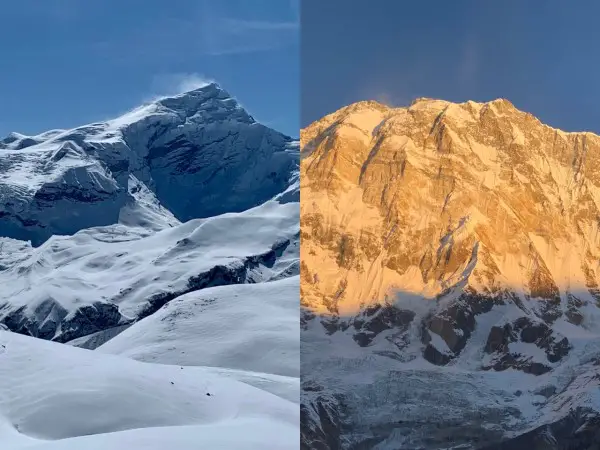
Annapurna Circuit and Annapurna Base Camp trek are two extremely popular trekking routes in Nepal. While both are beautiful and take place in Annapurna Region, there are also significant differences between the two.
Annapurna Circuit route circles the Annapurna Massif, while the Annapurna Base Camp (ABC trek), also known as the Annapurna Sanctuary trek, takes you to the base camp where climbing expeditions begin their ascent to the Annapurna summit (8091 m).
Read this detailed Annapurna Circuit vs. ABC trek comparison and decide which trek to choose!
What's in this blog post?
Annapurna Circuit vs. ABC trek: DURATION | ALTITUDE | DIFFICULTY LEVEL
What is the duration of each trek?
Annapurna Circuit trek is a longer and more demanding trek. Walking the entire legendary route requires around 18-21 days. However, with the development of road infrastructure, most people no longer cover the entire route on foot. Theoretically Annapurna Circuit trek is doable in 9 days now. That would mean however, spending 4 days looking at the mountains through the jeep window and a much higher risk of altitude sickness. So I strongly advise against it.
To fully enjoy the beauty of the Annapurna Circuit trek, you need at least 12-16 days. If you only have about 10 days, choose the Annapurna Base Camp trek, which is shorter, taking about 8-12 days to complete.
What is the maximum altitude reached on each trek?
The highest point of the Annapurna Circuit trek is Thorong La Pass at 5,416m. It is higher than the highest point of the Annapurna Base Camp trek, which is of course the base camp at 4,130m.
In terms of the maximum altitude, Annapurna Circuit trek is more similar to the Everest Base Camp trek. The base camp of the world’s highest mountain lies at 5,364m, just 52 metres lower than the Thorong La Pass.
Thorong La Pass (5,416m) in March vs. Annapurna Base Camp (4,130m) in November
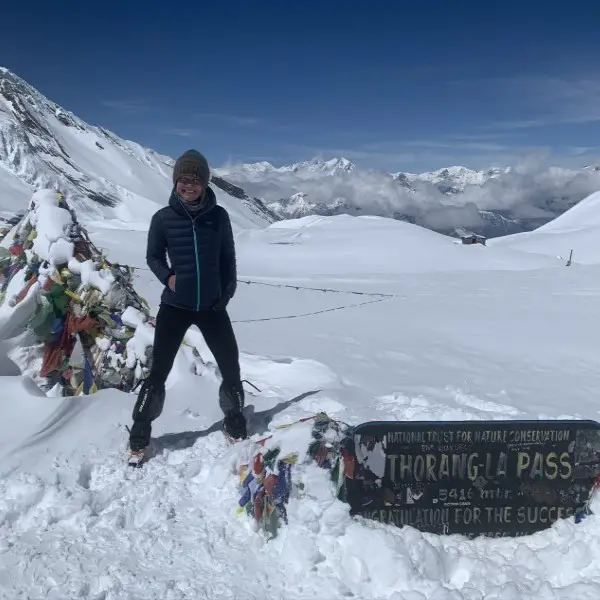
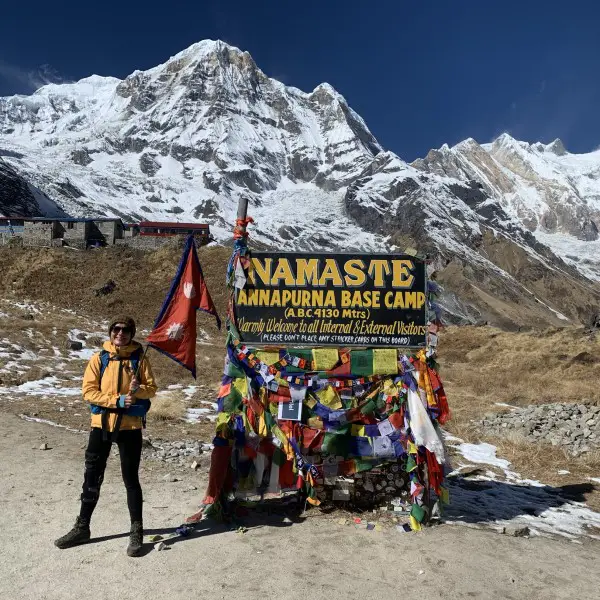
Which trek is more difficult?
Annapurna Circuit trek
The Annapurna Circuit trek is considered more difficult than the Annapurna Base Camp trek. It is a longer and more strenuous trek, as it involves crossing the Thorong La Pass at 5,416m and a few nights above 4,000m.
Crossing the Thorong La Pass is quite challenging. In order to avoid strong winds at the pass, the climb starts early in the morning. Some hikers set off even before dawn, at 4 am. By the way I started at 6 in the morning and that was enough. The ascent involves walking up a steep and rocky trail, which sometimes, if it snowed the night before, can be difficult to navigate. But if you hike in the main trekking season, don’t worry too much. There are always plenty of hikers going up. It’s really hard to get lost. As you climb higher, the air becomes thinner, which makes breathing, and as a result walking, more difficult. The descent takes several hours and can be hard on the knees.
following in the footsteps of others towards Thorong La Pass
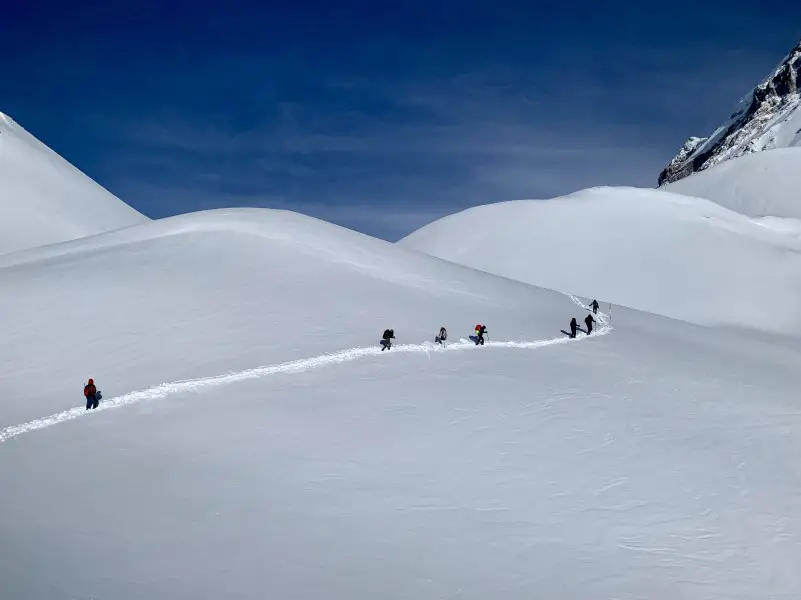
Annapurna Base Camp trek
The Annapurna Base Camp trek is considered easier, as you “only” reach 4,130m. To be honest, only above 4,500m life gets particularly unpleasant as it is much colder and the altitude sickness hits more often. If you are worried about altitude sickness, you can even avoid staying overnight above 4,000m on the Annapurna Base Camp trek. You just need to hike to the Annapurna Base Camp from Machapuchare Base Camp in the morning and return the same day. In that case, start early in the morning as it often gets cloudy in the afternoon.
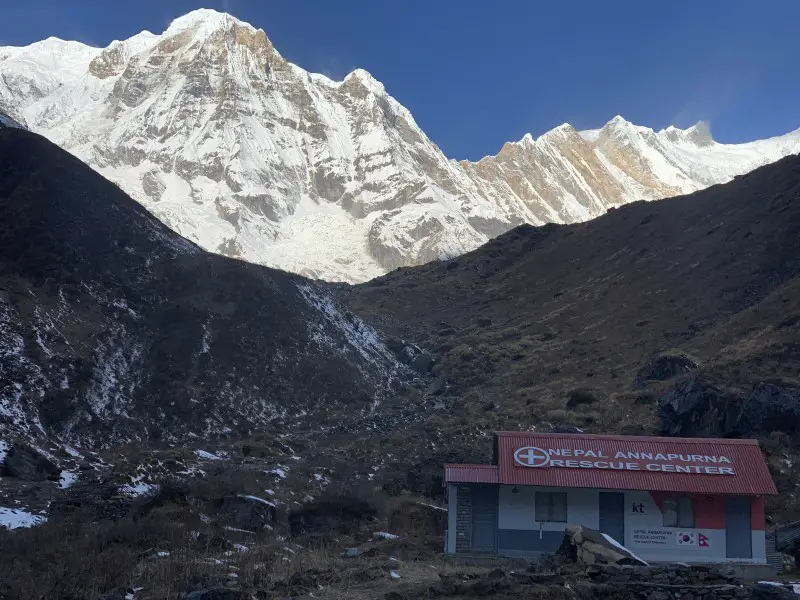
A morning view of the Annapurna South from the Machapuchare Base Camp
Annapurna Circuit vs. ABC trek: HIGHLIGHTS | SCENERY | CULTURAL EXPERIENCE
What’s the main highlight of each trek?
The highlight of the Annapurna Circuit trek is crossing the Thorong La Pass (5,416m), which is both a very challenging and rewarding experience.
Whereas the highlight of the Annapurna Base Camp trek is reaching the base camp (4,130m). It’s a true heart of the Annapurna Sanctuary, surrounded on all sides by towering peaks.
Which trek is more beautiful in terms of the scenery and Annapurna views?
Annapurna Circuit trek
The Annapurna Circuit trek is often considered as the most beautiful trek in the world. It offers a wide variety of landscapes, including lush green forests, breathtaking views of the Annapurna range (including Annapurna II, Annapurna III, Annapurna IV, Gangapurna, Tilicho Peak, and Pisang Peak), arid deserts and a high mountain pass.
Initially the trek leads you through subtropical forests to reach the spectacular and often snowy Thorong La Pass. Eventually, the route goes through the remote and arid Lower Mustang region and passes through the world’s deepest gorge and apple orchards. Ultimately the trek route encircles the Annapurna Massif, passing two other eight-thousanders – Manaslu (8,163 m) and Dhaulagiri (8,167 m).
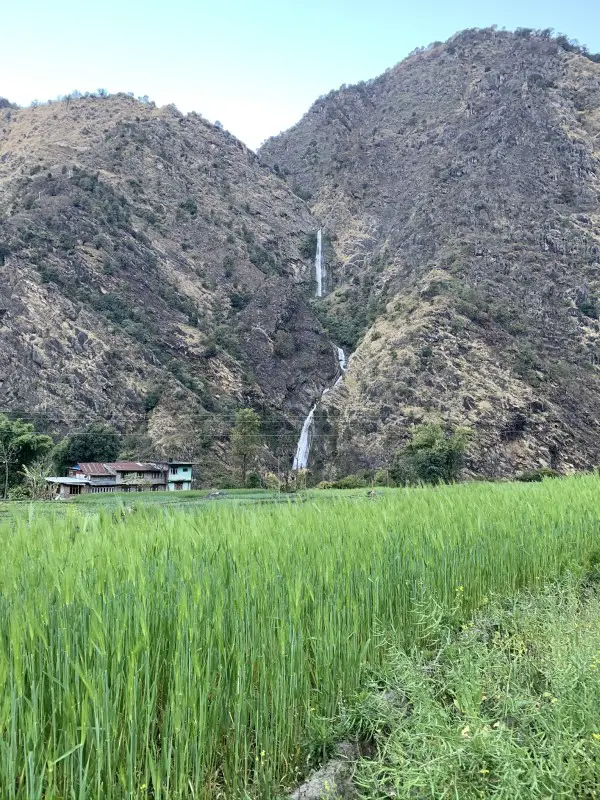
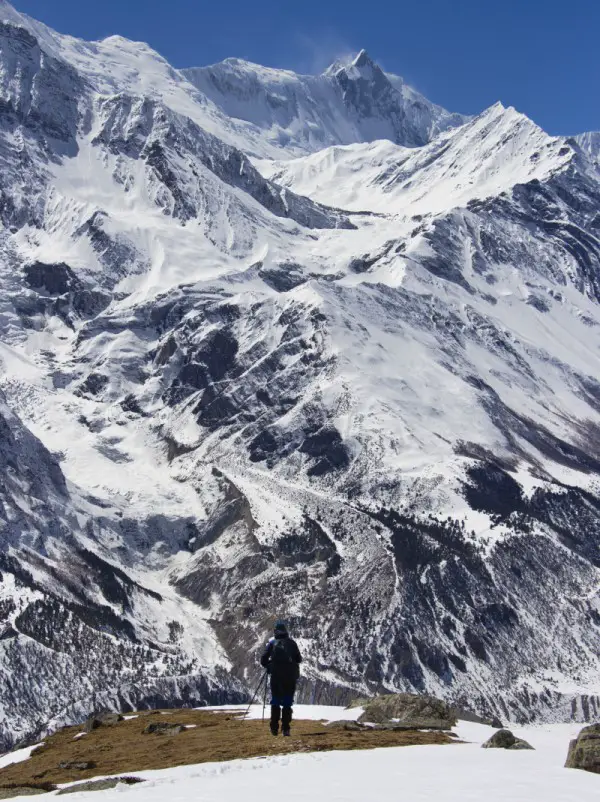
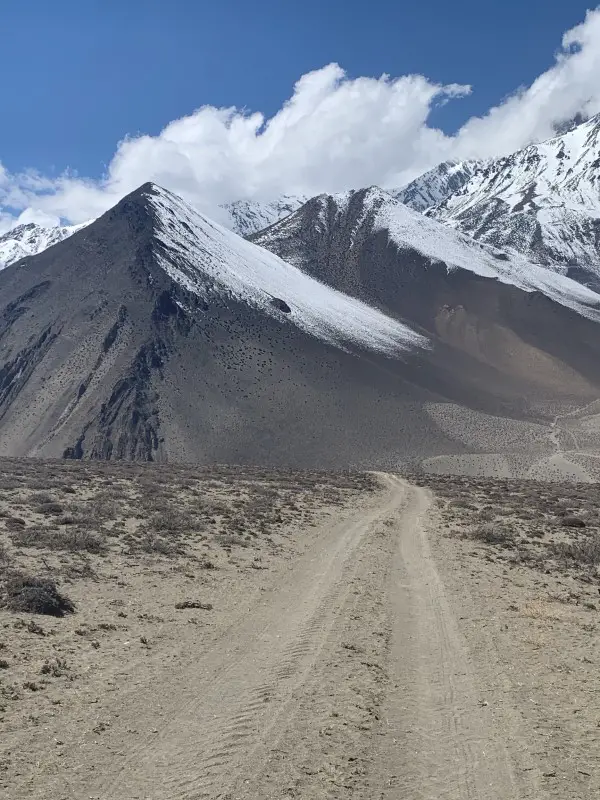
Annapurna Base Camp trek
The Annapurna Base Camp trek initially brings you through beautiful terraced farmlands and a bamboo forest, but in general is more focused on the Annapurna massif.
Trekking to the Annapurna Base Camp is probably the best way to enjoy up-close views of the breathtaking Annapurna Range (including Annapurna South, Annapurna I, Hiunchuli, Gangapurna, and Machapuchare).
Machapuchare, also known as Fishtail, is probably one of the most characteristic mountains in the world. The main peak of the Annapurna range – Annapurna I (8,091m), which is poorly visible on the Annapurna Circuit route, is exposed in all its glory during the Annapurna Base Camp trek.
At the end of both routes, there are natural hot springs where you can relax and soak in the pleasantly warm water after long days of trekking. The Annapurna Base Camp trail will take you to the springs of Jhinu Danda, while the Annapurna Circuit route will take you to the springs at Tatopani.
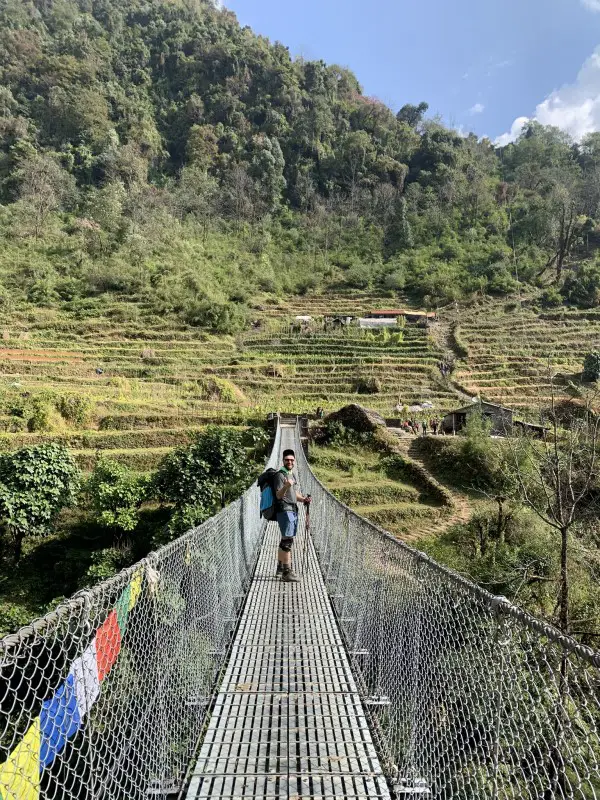
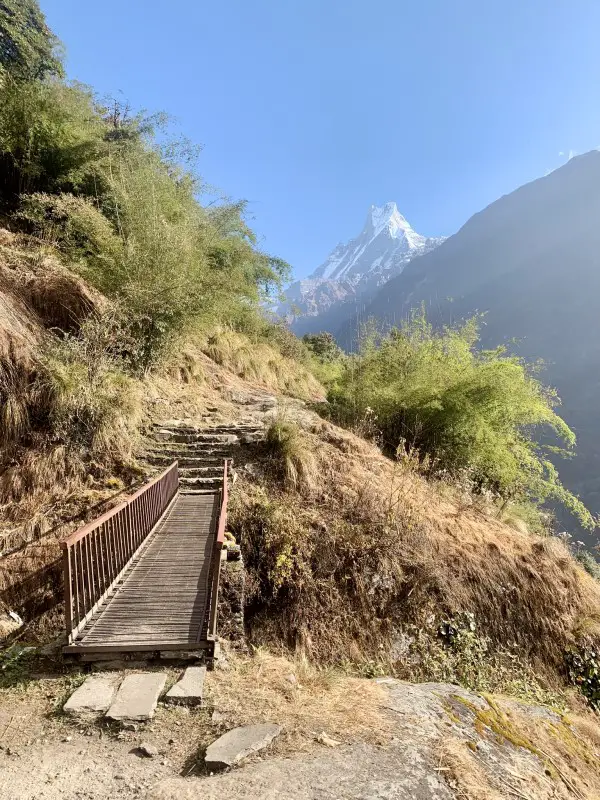
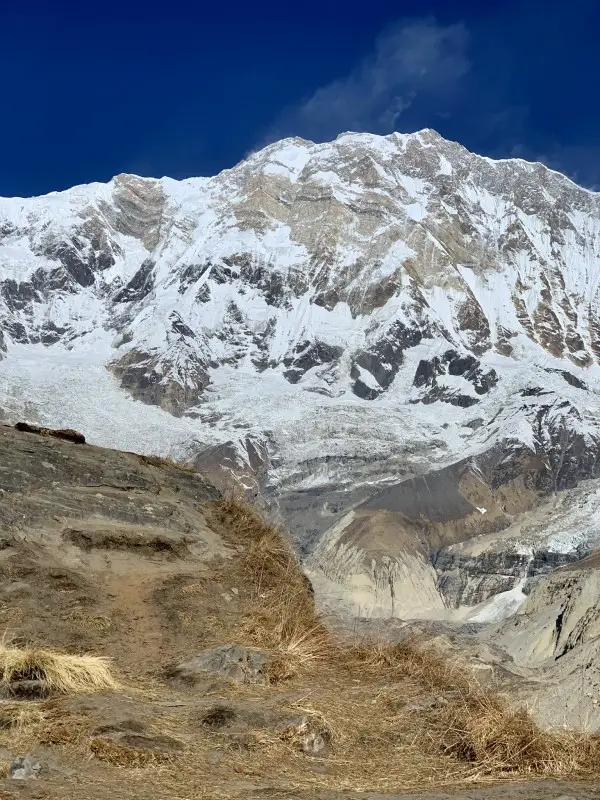
Which trek is more interesting in terms of the cultural experience?
The Annapurna Circuit is known for its cultural diversity. The route passes through several authentic Manang and Thakali villages, offering a unique cultural experience. In addition, after crossing the pass, you can visit the Muktinath temple – a mystical place of pilgrimage for both Hindus and Buddhists. In particular, the area around the huge Buddha statue located in the temple complex is breathtaking.
Although the Annapurna Base Camp trek also has some cultural elements as it passes through very picturesque traditional Gurung villages, its charm lies more in the natural beauty of the Annapurna region.
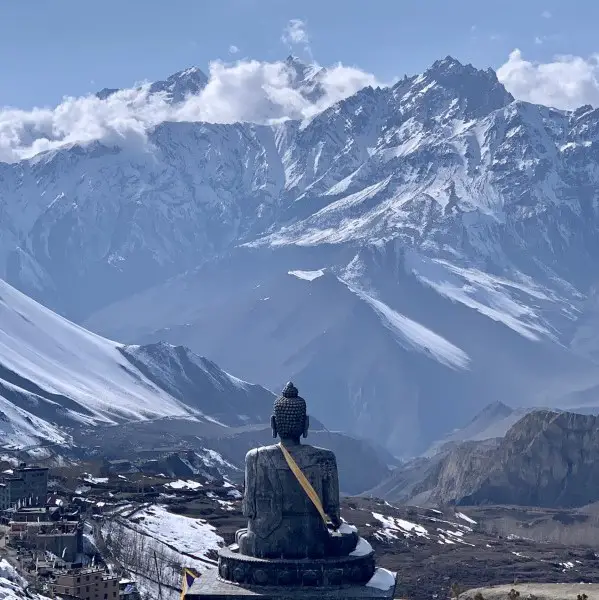
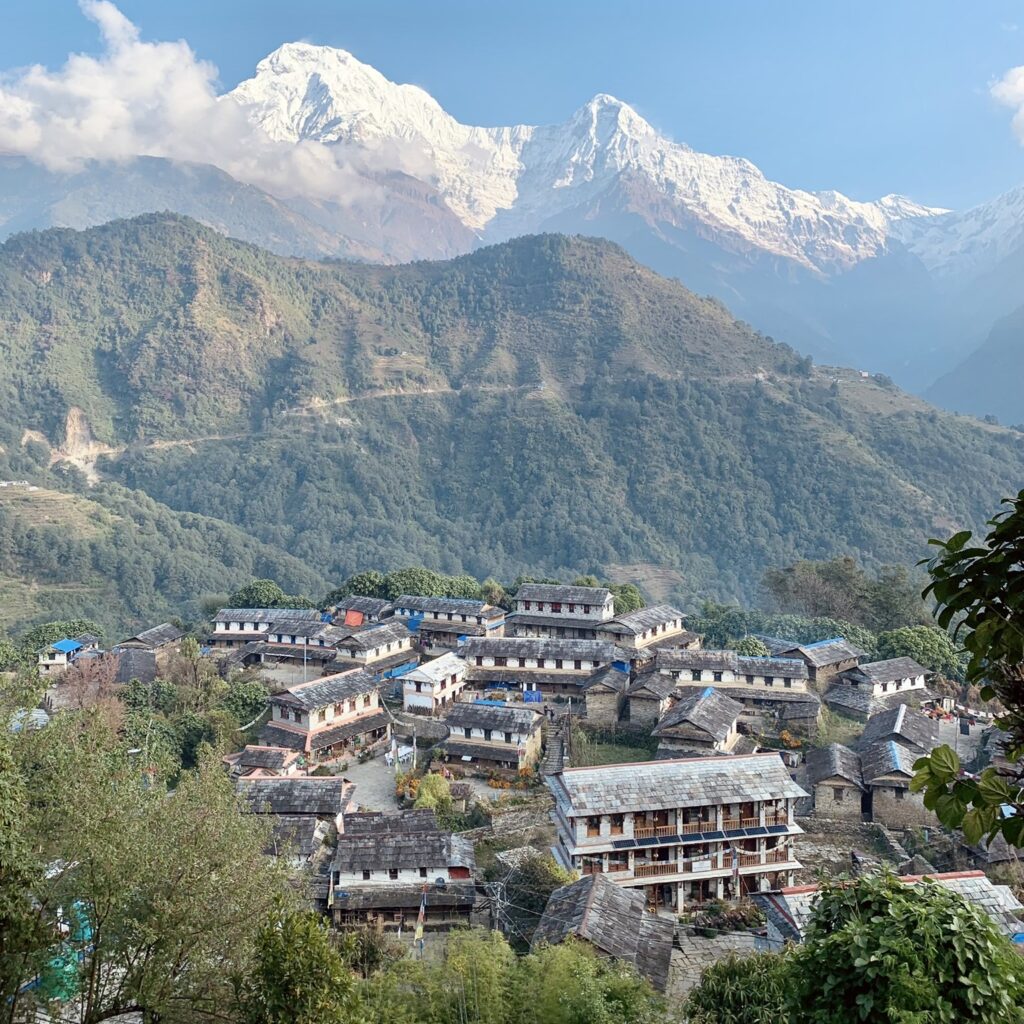
Annapurna Circuit vs. ABC trek: BEST TIME TO GO | PERMITS | ACCESSIBILITY
What's the best time to go?
The best time for both Annapurna Circuit and Annapurna Base Camp treks is during the spring (March to May) and autumn (October to November) months. The weather is stable, skies are clear, and temperatures are mild, providing optimal trekking conditions and spectacular views.
In general, spring and autumn are the best times to do the most popular treks in Nepal in both Annapurna and Everest regions. Just bear in mind that in the spring months the probability of snowfall is slightly higher.
Although sky tend to be clear in spring and autumn...
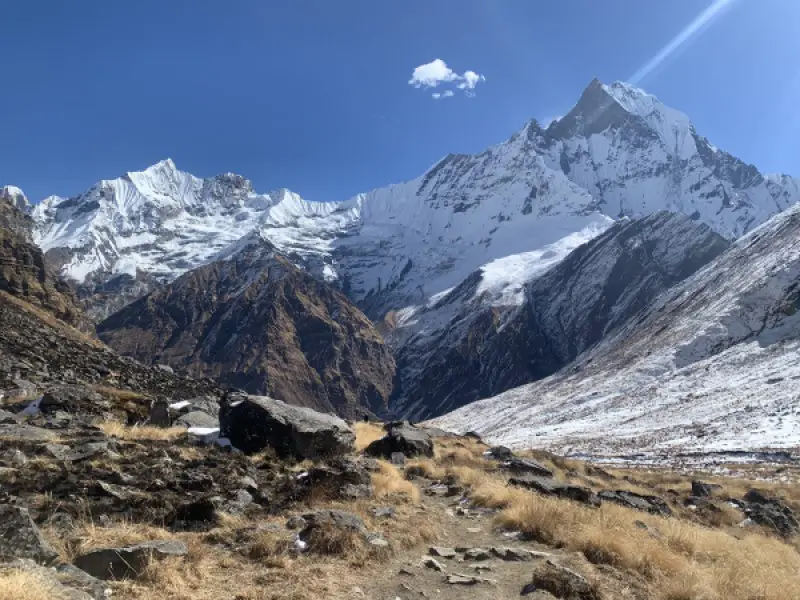
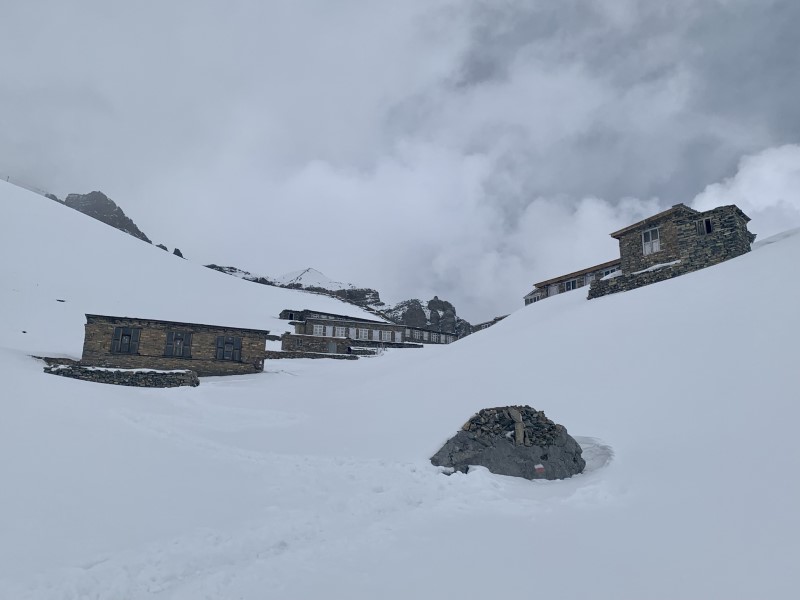
...you also need to be prepared for occasional snowfall
Trekking permits in the Annapurna area
For both Annapurna Circuit and Annapurna Base Camp treks, the same permits are required. They can be easily obtained from Nepal Tourism Board Office in Kathmandu or Pokhara. Officially, two permits are needed:
- ACAP (Annapurna Conservation Area Project Permit) – 3000 NPR;
- TIMS card (Trekkers Information Management System) – 2000 NPR
[UPDATE] However as a result of the ban on independent trekking in Nepal from April 2023, a TIMS card can only be obtained if you are trekking with a guide. Independent trekkers are no longer able to get it. Nevertheless, according to various trekking reports – it is still possible to hike to both Annapurna Circuit and Annapurna Base Camp both without a TIMS card and without a guide. More details here: BAN ON TREKKING IN NEPAL WITHOUT THE GUIDE – HAS THE RULE COME INTO FORCE? – UPDATE FROM THE TRAILS
Which trek is more accessible?
Annapurna Base Camp trek
The Annapurna Base Camp trek is more accessible than the Annapurna Circuit. Reaching the starting point is easier, it ends at a lower altitude and can be done in a shorter time.
It takes only 2-3 hours by jeep from Pokhara to reach villages of Ghandruk or Landruk where you can start the ABC trek. If you have more time, you can start hiking from Nayapul (1,010m), which is 1-2 hours from Pokhara, depending on whether you go by car or local bus.
Also, if you are debating how to get to from Kathmandu to Pokhara, check out this blog in which I compare all different ways: HOW TO GET FROM KATHMANDU TO POKHARA – 4 WAYS TO TRAVEL
Jeep station in Landruk
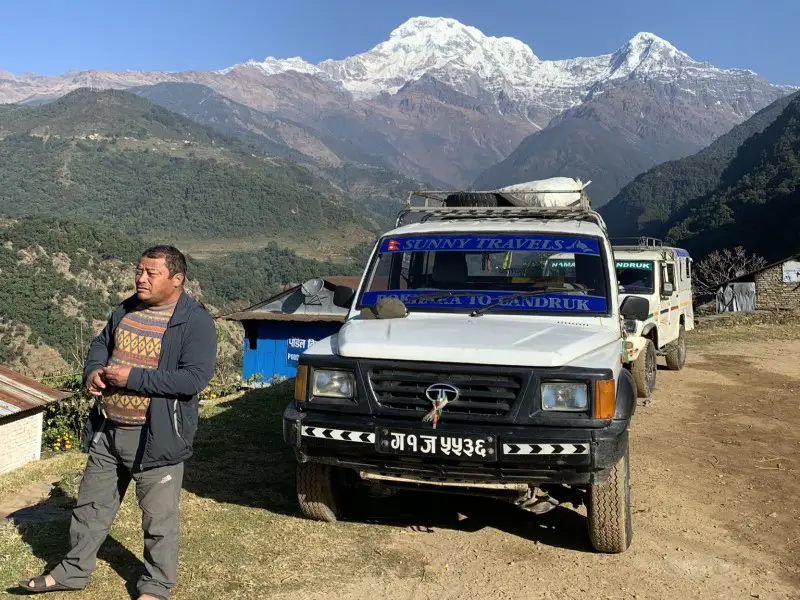
Annapurna Circuit
The bus journey to the traditional starting point of the Annapurna Circuit, Besisahar, is longer. It takes 6 hours from Kathmandu and 5 hours from Pokhara.
Additionally, nowadays most people start trekking not in Besisahar but in one of the villages along the route. You can go as far as Chame (2,670m) by jeep, but it will take an additional 4 hours. That said, I recommend starting lower at Ngadi (930m) or Tal (1,700m) to enjoy the changing scenery and allow your body to better acclimate.
Finishing the Annapurna Circuit is possible at many different points along the route. Thus, the return travel time depends on how far you go down on foot. Taking a plane from Jomson (2,720m) to Pokhara is also an option.
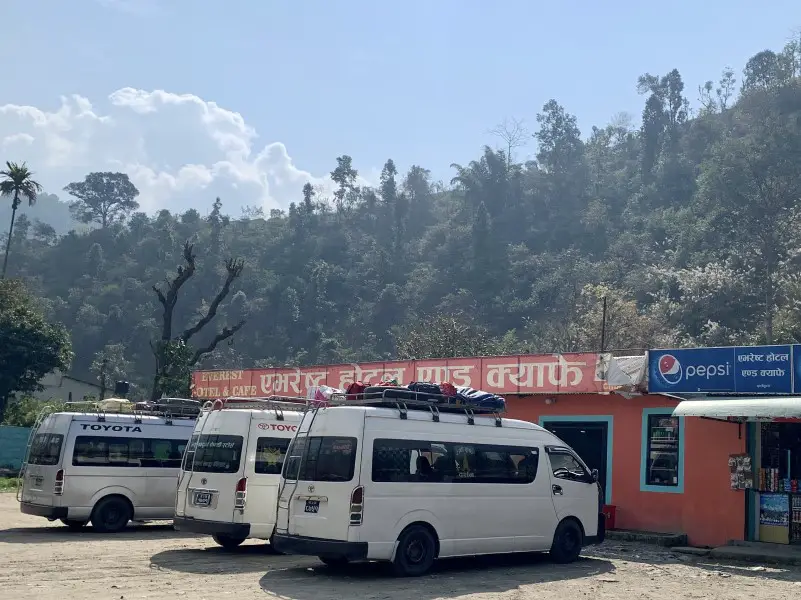
A short break on the way to Besisahar
To sum up, especially when you travel from Kathmandu to Pokhara by plane, getting to the starting point of the Annapurna Base Camp trek is easier than the Annapurna Circuit. Both treks end not too far from Pokhara, which is great. Relaxing at Pokhara’s lakeside is the best thing you can do after a tiring trek.
Annapurna Circuit vs. ABC trek: ACCOMODATION | FOOD | COSTS
Accommodation along the route
In general, both treks offer similar accommodation options. You don’t need to carry a tent or camping. Both the Annapurna Circuit and the Annapurna Base Camp trek have a well-established teahouse trekking infrastructure with basic guesthouses along the trails.
At lower altitudes, accommodation tends to be better. The choice of guesthouses offering attached bathrooms and hot showers is greater. In contrast, higher altitude areas have limited accommodation options. Lodges are more basic, rooms have shared bathrooms. There are often no hot showers.
From my personal experience, I will just add that the standard of Annapurna Circuit lodges is slightly better than on the Annapurna Base Camp trek. Rooms I stayed in usually had an attached toilet. Besides, Annapurna Circuit dining rooms are usually heated with firewood or yak droppings burned in the stove, which makes them nice and warm. In contrast, because firewood is prohibited in Annapurna Sanctuary and there are no yaks in the area, dining rooms on the Annapurna Base Camp trek are colder.
Typical conditions while trekking the Annapurna region
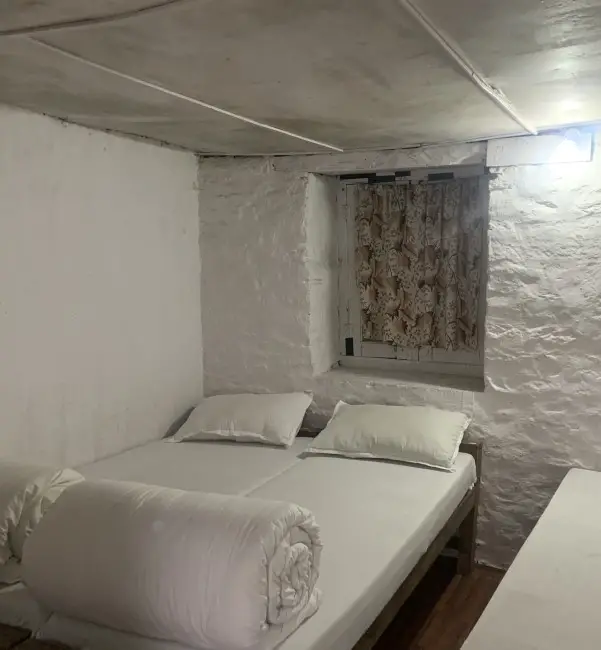
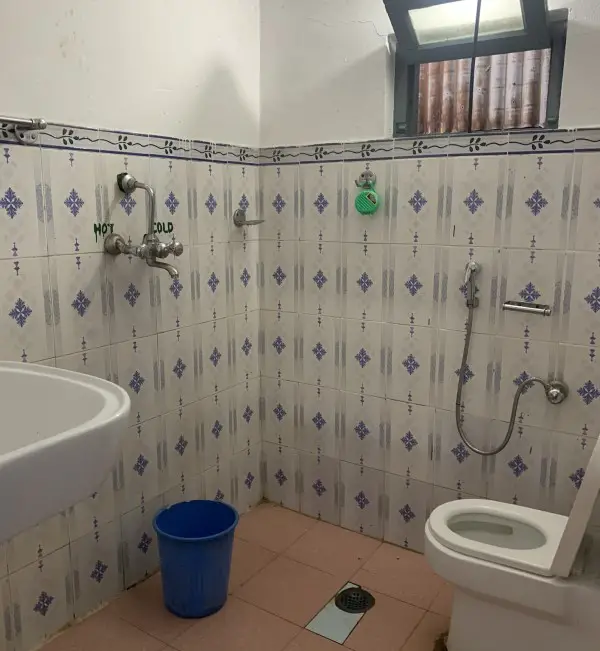
What kind of food is available?
Both the Annapurna Circuit and the Annapurna Base Camp trek offer a great variety of delicious food along the trails. You will typically find an extensive menu with a mix of Nepali and international cuisine. Both vegetarian and meat options are available. However, upon entering the Annapurna Sanctuary after passing Bamboo on the Annapurna Base Camp trek, eating meat is prohibited. It is probably even better as eating meat is generally not recommended on the treks in Nepal. You never know how fresh it is and there are not so many fridges in the Himalayas.
The most common food available on the Annapurna Circuit and Annapurna trek are:
- Dal Bhat: traditional Nepali meal consisting of rice, lentil soup, vegetables, and sometimes meat, eaten daily by most of Nepalis.
- My favourite momos: steamed or fried dumplings filled with vegetables, chicken or buffalo meat.
- Thukpa: hot noodle soup with vegetables
- Fried rice/fried noodles/fried potatoes mixed with vegetables, eggs or yak cheese.
- Breakfast sets with chapati or bread with eggs and fried potatoes.
- International dishes like pizza, pasta. Unless you don’t mind pasta with ketchup, it’s better to stick to Nepali cuisine which is simply delicious.
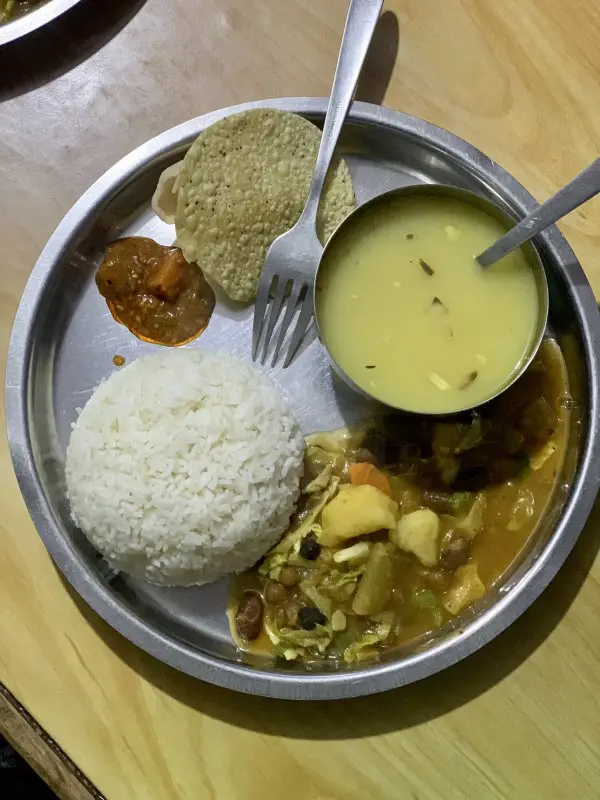
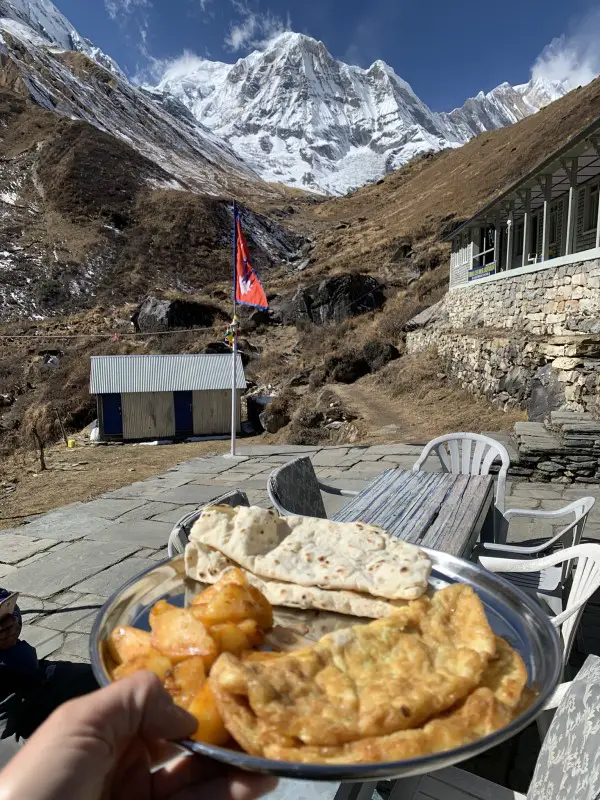
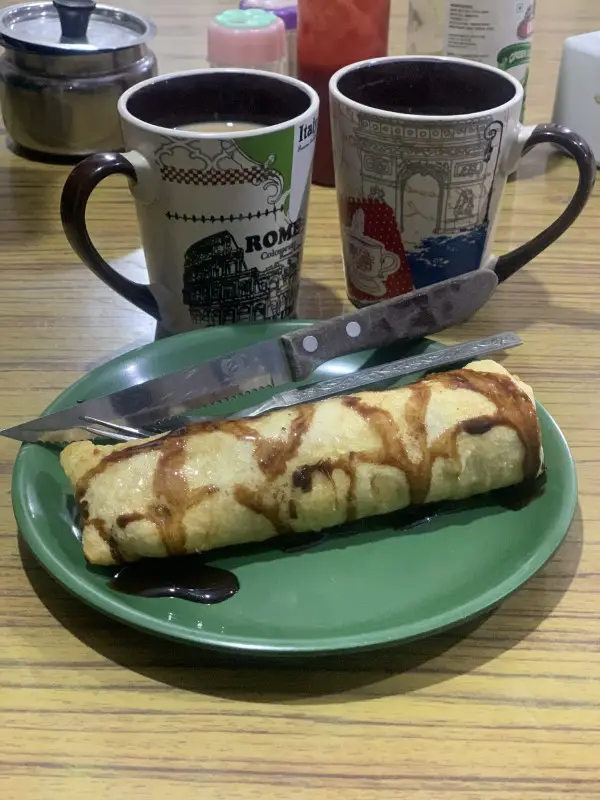
Finally, always carry water purification tablets or a water filtration system to ensure safe drinking water along the trek. Read more: DRINKING WATER IN NEPAL WHEN TREKKING AND THE PROBLEM OF PLASTIC IN THE HIMALAYAS
What trek is more expensive?
In general, the Annapurna Circuit is more expensive than the Annapurna Base Camp trek due to its longer duration and higher elevation, which require more extensive preparation and supplies.
The average daily cost of the Annapurna Circuit and Annapurna Base Camp trek (food and accommodation) however, is the same. Independent hikers without trekking agencies (guide and porter) spend (for food and accommodation, permits and transportation costs not included) approximately 2500 NPR per day on both treks.
Annapurna Circuit vs. ABC trek: SUMMARY
The Annapurna Circuit trek is longer and more challenging than the Annapurna Base Camp trek. It requires more time (at least 12-16 days), and thus more money, a higher level of physical fitness and trekking experience.
The Annapurna Base Camp trek is comparatively easier, more accessible and can be completed in a shorter duration (8-12 days).
Both treks offer stunning panoramic views of the Annapurna Range and a unique cultural experience. The Annapurna Circuit trek offers more diverse landscapes and a slightly deeper exposure to the local culture. On the other hand, the Annapurna Base Camp trek provides the best views of Annapurna I and Machapuchare.
As for the best time to go (spring and autumn), permits, accommodation and food options, the Annapurna Circuit and the Annapurna Base Camp trek are very similar.
So... which trek should you choose?
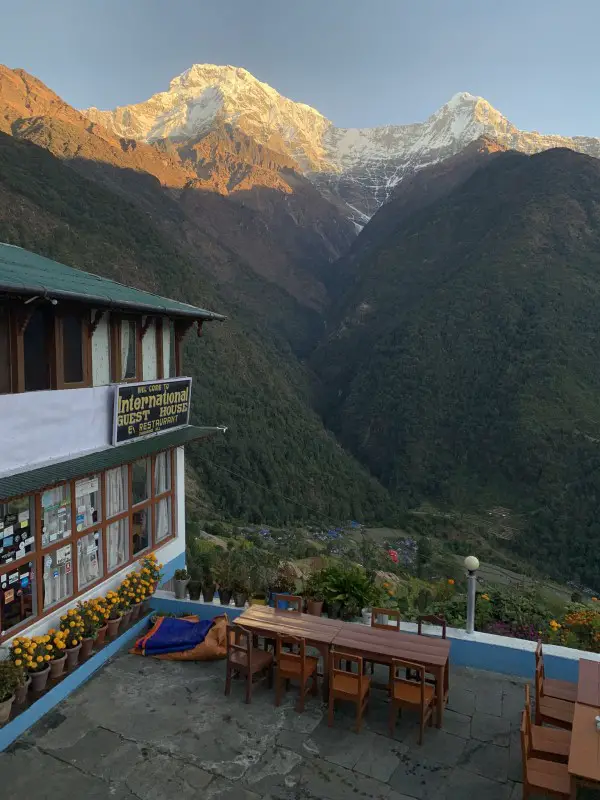
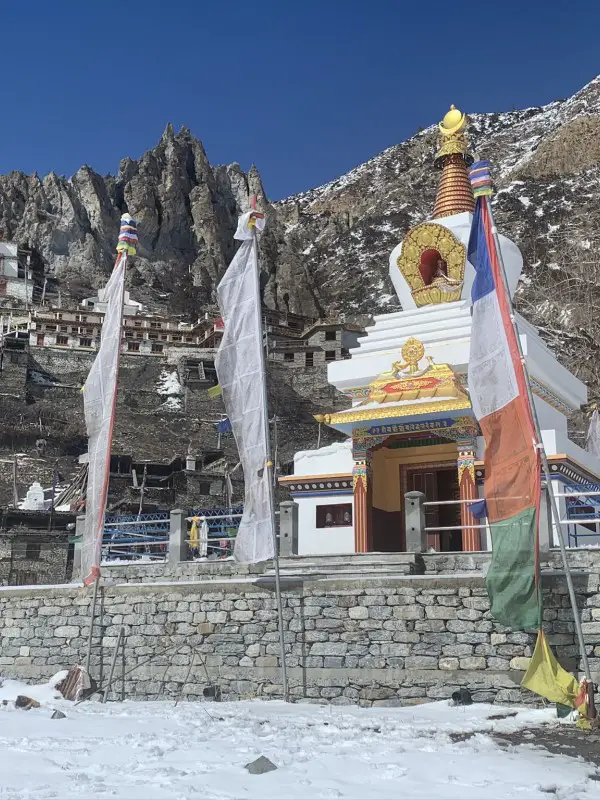
Annapurna Circuit vs. ABC trek: WHICH TREK TO CHOOSE?
Choosing between the Annapurna Circuit and Annapurna Base Camp trek depends mostly on three factors: time availability, mountain experience and your physical fitness level.
Don’t consider Annapurna Circuit if you have less than 12 days. It’s just not worth it. Besides it’s too dangerous due to the higher risk of altitude sickness.
If you’ve never been to high altitude and you are not sure how your body will react, the Annapurna Base Camp trek is a safer choice. That said, while hiking to the base camp many rescue helicopters flew over my head as trekking above 4,000m is always serious business. Remember about the altitude sickness prevention measures. Always climb slowly and drink plenty of water.
Read more about altitude sickness and how to avoid it here: RISKS WHEN TREN TREKKING IN NEPAL WITHOUT A GUIDE
The Annapurna Circuit is a longer trek and the higher altitude/thinner air makes each step harder. If you are not in good shape, you might want to choose the ABC trek.
Ultimately, both treks offer unique experiences and stunning scenery. So no matter which trek you choose, it will be for sure an unforgettable adventure and…
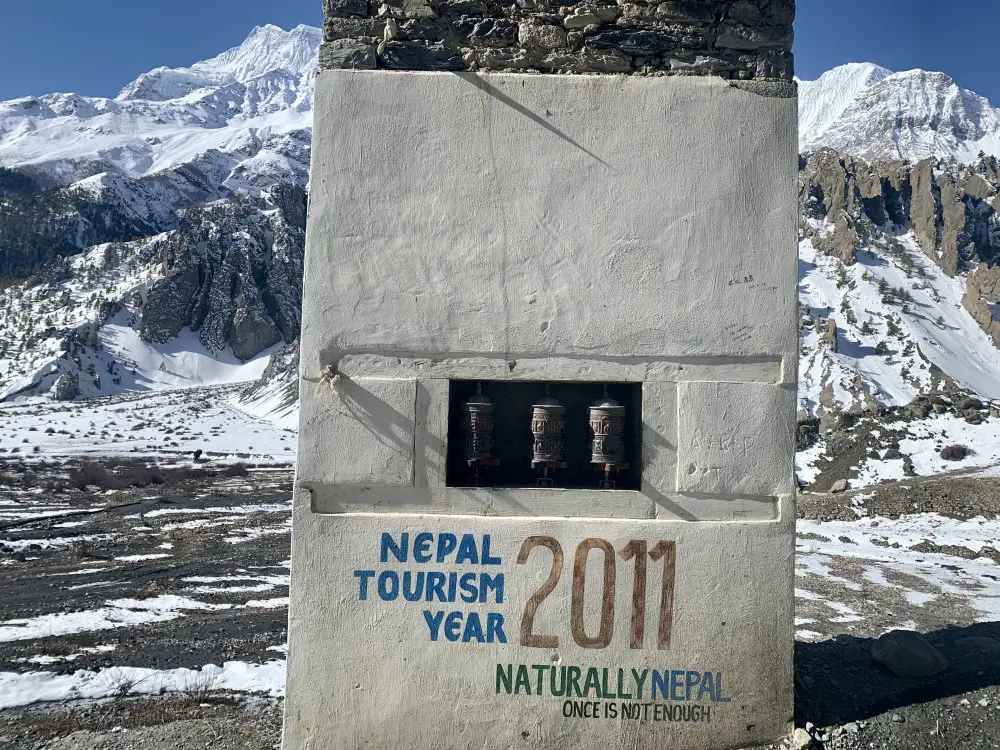
More about the Annapurna Circuit and ABC trek
ANNAPURNA CIRCUIT TREK – DAY BY DAY ITINERARY Route description and daily distances. Tips on how to avoid the road to enjoy the trek.
HOW IS THE ANNAPURNA CIRCUIT EXPERIENCE? How difficult is the Annapurna Circuit trek? Should you hire a local guide or can you go without? Annapurna Circuit trek pros & cons.
ANNAPURNA CIRCUIT – PRACTICAL GUIDE TO PLAN YOUR TREK Weather and number of days required to complete the Annapurna Circuit trek. How to get to the starting point? Permits, food, accommodation and Internet access.
ANNAPURNA BASE CAMP TREK ITINERARY WITHOUT A GUIDE Why ABC trek is worth it? Three different itineraries (6-day, 8-day or 10-day route). All details to plan your trek well: best time to go, permits, costs; day by day itinerary packed and tons of tips.
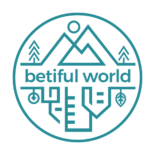
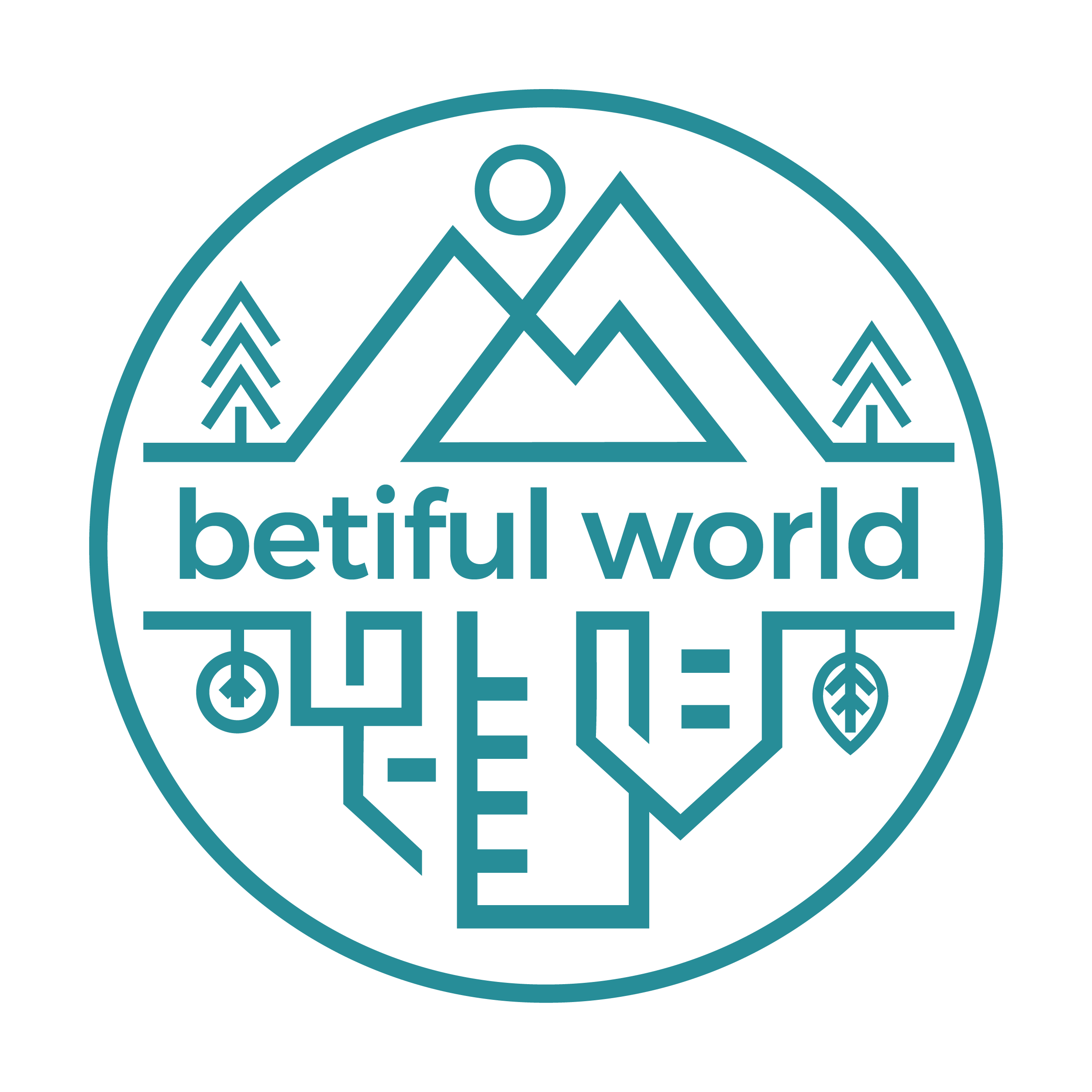
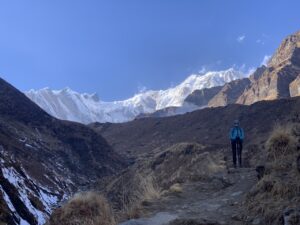
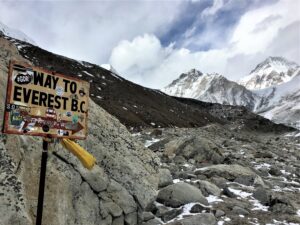
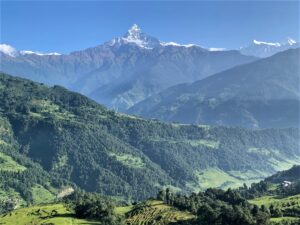
Thank you so much for a wonderful set of great posts.. I have a question about the “which is more expensive”. I’m not sure I’m reading this part clearly..
“Independent hikers without trekking agencies (guide and porter) spend (for food and accommodation, permits and transportation costs not included) approximately 2500 NPR per day on both treks.“
Is the $2500 NPR per day for food and accommodation, without including the cost of permits and transportation.
Just want to make sure I’m reading this correctly as I try to figure costs